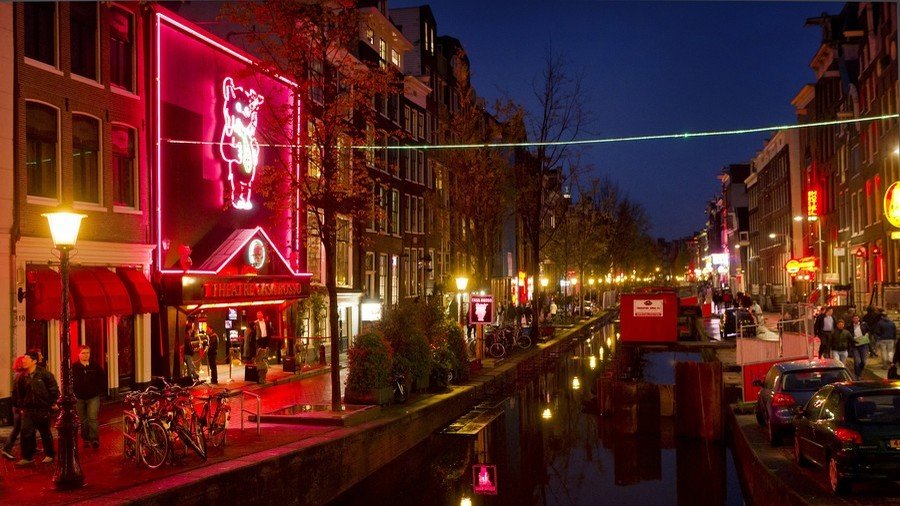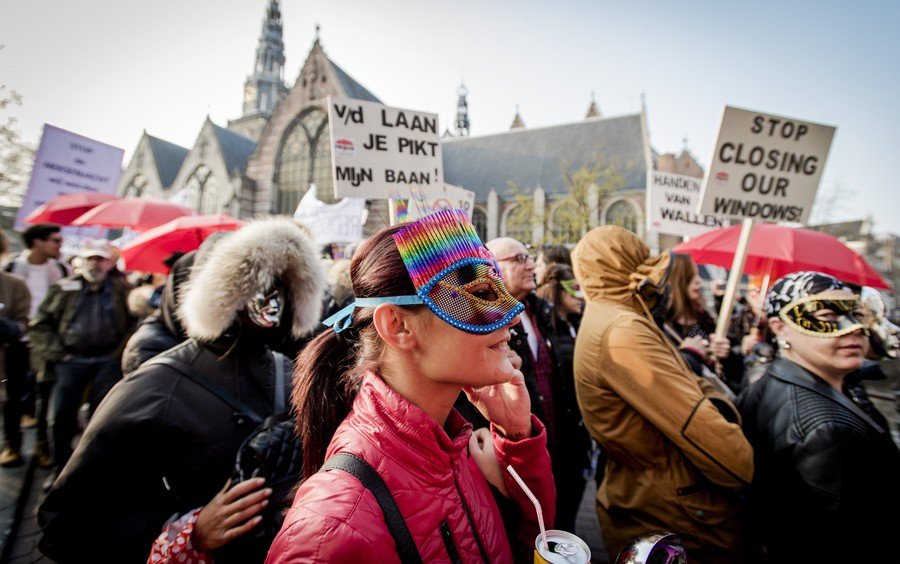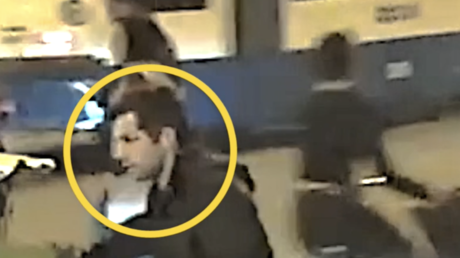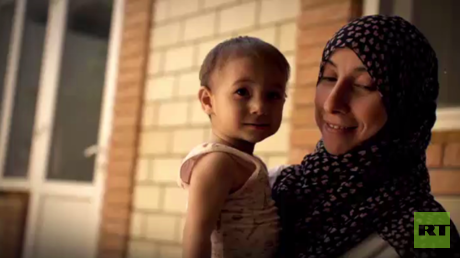Too much sex & drugs? Amsterdam to crack down on red light district crowds

With quaint canal streets crammed with tourists, Amsterdam’s city council has unveiled plans to reduce crowd numbers in the famous red light district. It is the latest in a series of laws aimed at cleaning up the city.
The red light district occupies just two canalside thoroughfares and a warren of alleys and passageways in the city’s centuries-old heart. The area has always drawn young, mostly male tourists, who come to let loose on beer, semi-legal weed, and sex for sale.
Thanks to cheap flights, the number of visitors in recent years has skyrocketed, and the streets are now permanently thronged with tourists, even in the low season. The area’s popularity with groups of young men has brought with it a raft of headaches for residents: public drunkenness, drug dealing, noise pollution, and businesses catering to tourists, not locals.
On Tuesday, the city’s new mayor Femke Halsema announced that the council would introduce temporary street closures on busy nights, so cleaners can get in and mop up vomit and human waste. Officials will also be roaming the streets, handing out on-the-spot fines for offenses like littering and public urination. In addition, council ‘hosts’ will be deployed to direct crowds to quieter streets.
“Access to the city's famous canals are also being closely monitored,” the council said.
The announcement comes a week after the city’s ombudsman described Amsterdam after dark as an “urban jungle,” where the police are powerless to handle crime, violence and drug trade.
Spreading the load
While Amsterdam is the Netherlands’ most dangerous city, crime there has been steadily declining for several years. Tourism, however, has not. Almost 20 million tourists will visit Amsterdam this year, up from under 10 million in 2000.
Those tourists need somewhere to stay, and locals have complained that the growth of Airbnb lettings have further congested the city’s already tight property market, as landlords can squeeze more money out of repeated short-term lettings than regular tenants. In addition, Airbnb lettings bring tourists into residential areas, and locals have complained about noise and antisocial behavior landing on their doorsteps.
READ MORE: Biker gang member arrested for firing anti-tank missile in Amsterdam (PHOTOS)
To that end, the city introduced restrictions on temporary lettings this year, slashing the number of days people can rent out their homes on the platform from 60 to 30. The city has also forced Airbnb landlords to sign a register, and has promised to step up inspections of rented properties.
For regular hotels, the city has toyed with the idea of hiking the nightly tax on rooms, and last year launched a PR campaign aimed at convincing tourists to visit areas outside the city center.
Project 1012
Tourists still flock to the center though, but they flock to a different center than the lawless, post-apocalyptic jungle described by the city’s alarmist ombudsman. A cleanup operation has been underway in the red light district for just over ten years now, and according to some locals, it’s changed the area for the worse.

Called ‘Project 1012’ after the district’s postcode, the plan focused on scrubbing up the image of the red light district and attracting a more highbrow class of tourist.
First to go were the iconic windows, where prostitutes ply their trade. There are now under 300 windows in the district, down from 486 in 2006. Brothel owners, who function more as short-term landlords than pimps, have either been bought out by the city or pushed out with the threat of human trafficking laws.
“They try to sell the clearing of the brothels as a solution to do something [for] the women, and we all agree here that it’s not the right solution,” said police officer Ron Beekmeijer.
Beekmeijer is the former chief of the Amsterdam police vice squad, the unit tasked with policing the city’s sex trade. To Beekmeijer, and to many of the working girls themselves, prostitutes are safer working in the open than underground.
“Every idiot knows that pushing things underground only makes it easier for criminals to get their hands on,” said Felicia Anna, a prostitute working in the area. In the black market, she explained, “justice is at the hands of those who’ve got the most muscle. And I can tell you right now, the prostitutes aren’t the ones with the most muscles.”
The closed windows have been replaced by smoothie bars and pop-up shops, quirky joints that wouldn’t look out of place in Shoreditch or Williamsburg. For Mariska Majoor, a former prostitute turned activist, the city’s cleanup operation comes at a price: the loss of a part of its identity.
“In 10 years time all these alleys will look as decent and boring and hip as the rest of the city,” she said.
Locals are divided on the success of Project 1012, but one thing the project has not managed to do is curb the sheer number of tourists thronging the city’s narrow streets. Now, the council looks to do with closures and fines what they could not do with an ambitious gentrification project.
Graham Dockery
Think your friends would be interested? Share this story!















